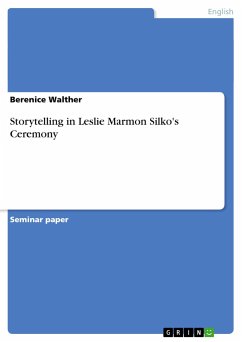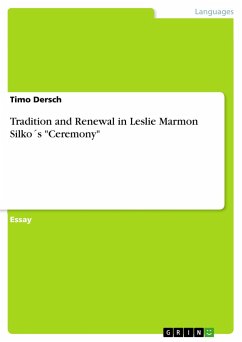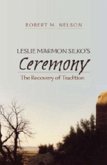Seminar paper from the year 2004 in the subject English Language and Literature Studies - Literature, grade: 2,3, University of Heidelberg, language: English, abstract: Leslie Marmon Silko's novel Ceremony is not only about Native American culture, it is also about the environment and how different ethnical groups deal with it. Even though they do not intervene in the story's course, animals (except the cattle Tayo has to find), plants and last but not least the 'land' (as a term for all more or less 'dead' things in nature, like stones, e.g.) play a crucial role in this piece of fiction. This essay will take a look at the novel from an environmentalist perspective in order to show how nature is treated here by the humans and which effects are caused by this. It will also examine how this plays a role in Tayo's personal fate. In the case of Ceremony environmentalism is also humanism. Aboriginal peoples are very often connected with their land and everything in and on it in a way which is quite different from the European U.S. American way of living. Every harm done to 'their' land hurts them very much. This is also shown in Silko's novel and therefore will be taken as a theme in this essay.In a Native American culture as the Laguna Pueblo's reality, dream and belief often become mixed. Therefore it will sometimes be necessary here to go beyond the actual events and get involved in what could be called 'religion' (even though the focus will mostly be on what really 'happens'), speaking in Western terms. What is meant here are mainly the stories which are scattered throughout the book. These stories represent traditional Laguna beliefs (the stories themselves reproduced in Silko's literary modification) and offer a view on nature that is based on harmony and a peaceful living together.But first this essay will deal with the bad things commited towards the environment, because this way the contrast to the positive actions and interactions with nature that form the second part will be as sharp as it should be seen.As a last part will serve what can be considered the 'environmentalist boiling-point' of the book, the part in which the Native American ecocatastrophe is lifted on a global level.








